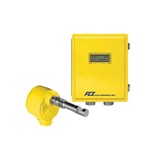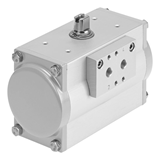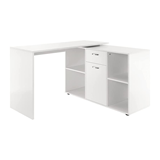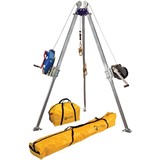According to Dr Jane Murray, Jones Lang LaSalle’s Head of Research, “All CBD office markets have seen continued tenant demand, with aggregate net absorption across these markets reaching 113,000sqm in the December quarter compared to 80,000sqm in the September quarter and significantly greater than at the same time last year (6,000sqm).”
“2004 has proven to be the first year of positive net absorption since 2000 (533,000sqm), with a total of 480,000 sqm absorbed throughout the country in the major monitored office markets.”
The Sydney CBD has seen the greatest demand over the quarter, with net absorption of 42,000sqm, the largest result for Sydney in the last four years, followed by the Perth CBD at 24,000sqm. “With strong local corporate profitability and a positive outlook for white collar employment, we expect continued solid leasing demand over 2005,” she says. “The ABS's measure of corporate profitability gross operating profits grew nearly 13% over the year to September quarter 2004 and strong business survey data indicate that this strength is likely to continue over 2005."
"Further supporting office demand in 2005 is an expected recovery in white collar employment, which fell slightly over 2004 but is expected to at least keep pace with GDP growth this year. This improvement is also supported by measures of services sector sentiment, such as from the Australian Industry Group, which is pointing to both stronger output and employment outcomes in the sector over coming months.”
"The recovery in the finance and insurance sector will be a boost for tenant demand in the major cities that have a high exposure to this sector, particularly Sydney, while the enormous strength that currently exists in the resources sector will continue to buoy demand in some of the smaller capitals, particularly Perth and Brisbane,” she says.
According to Dr Murray, the national vacancy rate is continuing to decline to be now at 9.4%, from 9.8% the previous quarter and 10.1% the quarter prior to that. Of all the CBD markets, the lowest vacancy rate is in Canberra at 4.3%, while the largest decline for the quarter occurred in Brisbane where the vacancy rate fell from 5.8% to 4.6%. The Adelaide vacancy rate is also of interest this quarter, being the lowest for the last 15 years at 8.7%.
Construction continues to be the strongest in the Melbourne CBD, with 306,000sqm under construction with a precommitment of 64%, and 230,000sqm due for completion by the end of 2005. Lack of available supply has been the most dominant factor in Brisbane, with Riperian Plaza due for completion in the first half of 2005.
Prime CBD yields were generally stable over the quarter, with some firming recorded in the Melbourne, Brisbane, and Canberra markets.
Sydney
The strong level of demand in Sydney can be partially attributed to the completion of Latitude at World Square, where relocating tenants have taken on greater space. A number of companies also moved into the Sydney CBD in Q4, including HBOS/Bankwest taking up 5,000sqm at 45 Clarence Street and EDS moving from North Sydney to take up 2,000sqm at 30 The Bond.
According to Andrew Balzanelli, Jones Lang LaSalle’s Director NSW Leasing, the outlook for positive net absorption in the Sydney market remains strong for 2005.
“In the last few years, the Sydney CBD has lagged other CBD markets, however, in the final quarter of 2004 Sydney has re-emerged with 42,000sqm of net absorption recorded. In addition to the completion of the Latitude at World Square project allowing tenants to expand into new space, there has also been strong activity at the smaller end of the market.
“Surprisingly, tenant demand growth in the Sydney CBD over the year was primarily driven by the IT & telecommunications, accounting and government sectors, and by the rapid growth of small tenants.” Balzanelli says this highlight that this is a good indication of positive business sentiment.
“The traditional leading industry for demand of office space in the Sydney market, the finance and insurance sector, was relatively absent over 2004. Looking forward, we expect growth of around 4% nationally in the finance and insurance sector in the coming year, boding well for the Sydney CBD market.
Average prime gross effective rentals fell by 2.1% in the quarter due to a further increase in incentive levels. A general flight to quality is also evident, Balzanelli confirms. “Many tenants are taking advantage of low effective rents to relocate to higher quality accommodation before the tide turns. As a result, a two-tier market is emerging: premium buildings with tight vacancies should be able to reduce incentive levels quicker, but owners with significant vacancies may be required to maintain or increase current incentive levels.
Melbourne
The Melbourne CBD market is continuing to show strong resilience to the level of new supply in the market, with another quarter of positive net absorption of 10,000sqm following 45,000 sqm in the September quarter. Average prime gross effective rents were unchanged.
Docklands continues to be the strongest performing market of any monitored by Jones Lang LaSalle Research, with net absorption of 95,000 for the 12 months to December, compared to Melbourne CBD property at 58,000sqm.
According to Jones Lang LaSalle’s Victoria Leasing Director Kevin George,
“Despite positive demand, total enquiry levels for the CBD are significantly lower than the same time last year. Demand in the Melbourne CBD has resulted in continued decreases in vacancy rates for the third consecutive quarter, down from 10.7% in Q1 2004, to 9.1% in the December quarter,” he says. “These figures represent a false dawn for the market in the short term but are “promising” in the medium term.
“The market is still bracing itself for 100,000m² of vacant new space that is due to come into the market by Q1 2006 and around 200,000m² of space being vacated by the tenants moving into the new towers. Therefore the next move in the vacancy rate will be upwards but it will from a basis far lower than most expected at the beginning of the construction cycle,” he said.
The Melbourne investment market has seen a dramatic increase in investment activity in the December quarter, with five sales over $5million totalling $367.2 million. The largest of these sales was the anticipated disposal of Nauru House (80 Collins St) for $140 million. Prime yields have firmed by 25 basis points at the lower end to range from 7.0%-8.0%.
Brisbane
According to Jones Lang LaSalle Research, the Brisbane CBD market finished strongly in the December quarter, with tenant demand expanding by 16,000 sqm, bringing the total annual absorption to 62,000sqm.
The Brisbane market is going from strength to strength at present. The market has seen strong tenant demand, continuing lowering vacancy rates, growth of prime gross effective rents of 19% for the year to December and 4.2% for the quarter and some slight tightening of yields at the upper end of the market.
The state government has been a significant contributor to demand for office space this quarter with space being taken in 60 Edward St, (3,000 sqm), 15 Adelaide St (1,500sqm) and 363 George St (2,500sqm).
Continued strong absorption and only a small increase in supply have resulted in the vacancy rate falling over the quarter to be at 4.6%, which is expected to remain low until the addition of further stock on the market
Adelaide
The Adelaide market now has the lowest vacancy rate recorded in the CBD in over 15 years, with the vacancy rate decreasing from 9.5% to 8.7% during the final quarter of 2004.
Net absorption for the December quarter tallied 4,200sqm, the fourth consecutive quarter of growing tenant demand.
Some rental growth was also recorded this quarter with average prime gross effective rents increasing by 1.8%.
Perth
Perth has seen the fourth consecutive quarter of positive net absorption of 24,000sqm, bringing the total net absorption for the year to over 50,000sqm.
According to David Evans, National Leasing Director for Jones Lang LaSalle, demand is greatest coming from the state government and the expected ongoing expansion of the resources and mining sector.
“Major deals in the December quarter include the Centrelink taking 4,300sqm at 1 Forrest Place and BHP Iron Ore taking 4,500sqm at 225 St Georges Terrace,” he says. “ There are a couple of significant State Government deals about to be announced in the coming weeks which will continue the momentum.”
“As a result of tenant demand, vacancy rates have dropped again this quarter to be the lowest for the year,” he says. “Vacancy was particularly affected in the A grade market, which reduced by 2% over the previous quarter.”
There was a marginal increase in prime net face rents over the quarter, with incentives remaining unchanged and rents stabilising in the secondary market.
“With the market to tighten further throughout 2005, we expect to see upward pressure on rents and reduced incentives,” he says.
Canberra
The Canberra market has seen the strongest annual take-up recorded by Jones Lang LaSalle Research in that market since 1988, driven by ACT and Federal Government expansions. Total net absorption came in at 50,000sqm for the 12 months to December 2004.
Total vacancies fell for a fourth consecutive quarter in response to the consistent tenant activity. The total vacancy rate fell from 5.2% in the September quarter to be 4.8% in Q4, the first time that the level of Canberra office vacancies has fallen below 5.0% since December 1993.
Competitive rents achieved at the newly completed 11 Moore Street helped drive rents higher over the quarter. Average prime gross rents increased by 1.8% in Civic, with stable incentive levels. Investment yields have tightened by 25 basis points at the upper end during the quarter to range from 8.00- 9.5% as a reflection of the improving quality of stock in the Canberra market.








